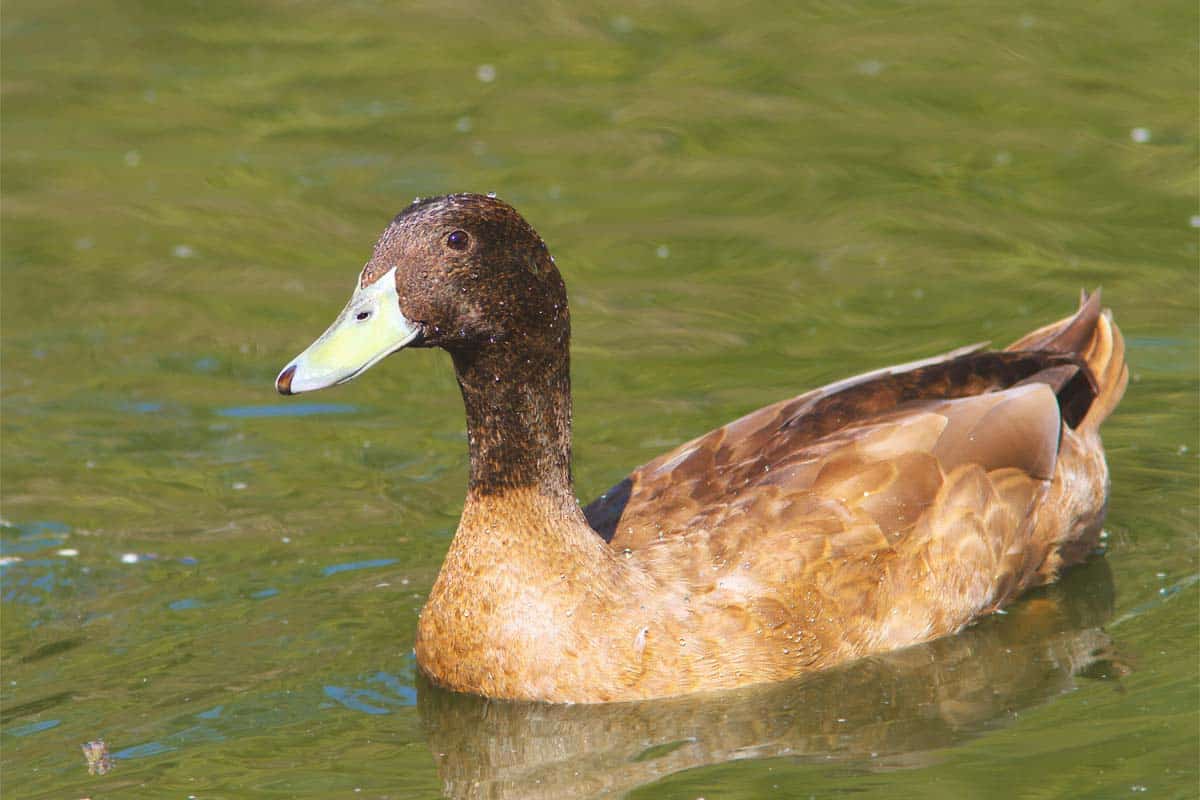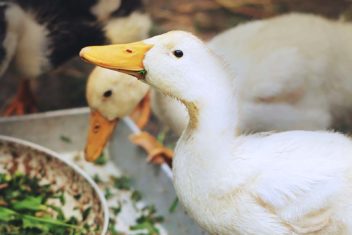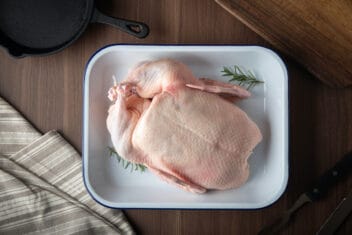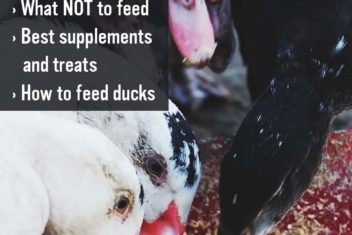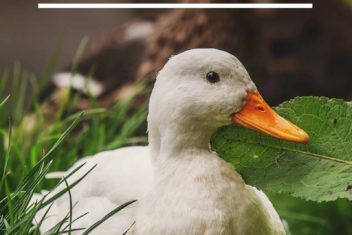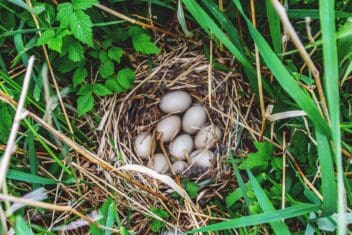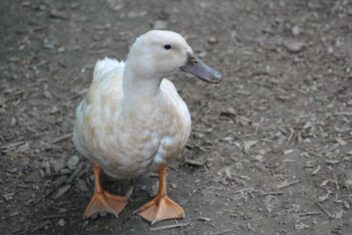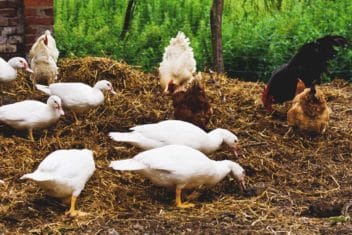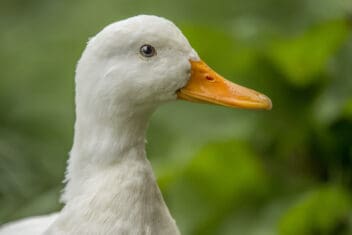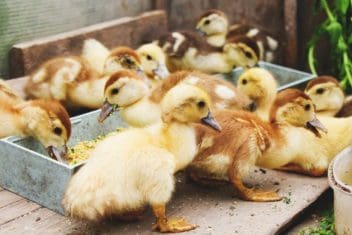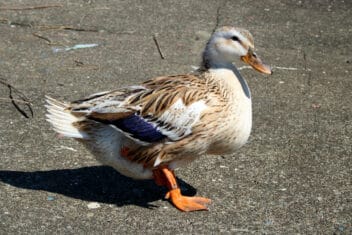Khaki Campbell ducks are an excellent pick as an egg producer for the practical homesteader. Many people choose this breed because they are simple enough to raise and yield an impressive amount of eggs.
The morning I unsuspectingly walked into a feed store and walked back out with ducks, they were little Khaki Campbells. For a new duck keeper, Khaki Campbells ended up being the perfect breed to start out with.
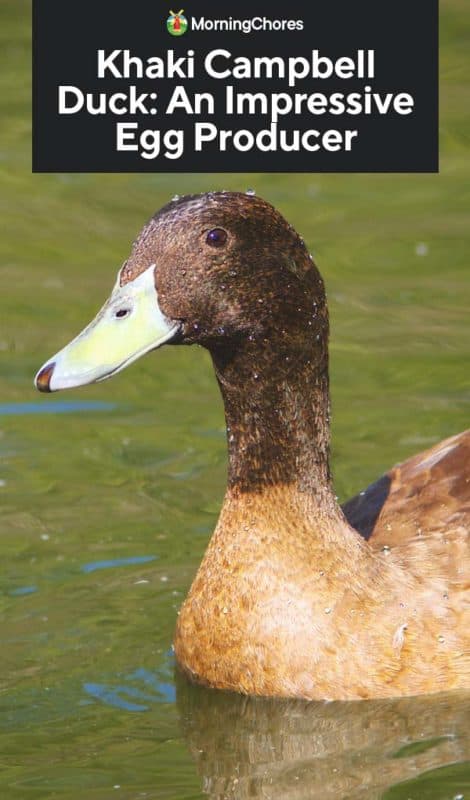
About Khaki Campbell Ducks
Khaki Campbells were bred by Adele Campbell around the turn of the 20th century in Gloucester, England. The goal with this breed was a duck that could be depended on for an abundant supply of both meat and eggs, it’s safe to say Khaki Campbells rose to the challenge.
Rouen, Indian Runner, and wild ducks were the main ducks to be crossed in the making of the bird we know today as the Khaki Campbell.
Today, we have a duck that has been streamlined more for eggs than meat production. Despite the fact they aren’t the meat producers they once were, Khaki Campbells are still an excellent breed.
Khaki Campbell Characteristics

1. Size and Weight
Khaki Campbells are fairly petite ducks, which makes them an affordable breed to keep fed. A full-grown Khaki Campbell rarely tip the scales past 5-pounds, with most ducks weighing around 4.5-pounds.
2. Temperament
This is a docile duck with a laid back demeanor that makes it a peaceful breed to have on a farm and around other animals. Khaki Campbell hens have a tendency to go broody and make excellent mothers upon hatching out ducklings.
3. Egg Production
Hailed as one of the best duck egg producers out there, you certainly shouldn’t be disappointed with the Khaki Campbell’s egg production. A healthy Khaki Campbell hen should lay between 300 and 320 large, white duck eggs in a single year.
4. Meat Production
Despite the fact they aren’t the largest ducks out there, Khaki Campbells aren’t horrid meat producers. Meat quality is still impressive coming from this breed, although not in the most abundant quantities. However, if you’re looking for a duck specifically for meat production, Khaki Campbells probably shouldn’t be at the top of your list.
Caring For Khaki Campbells
1. Feeding and Nutrition
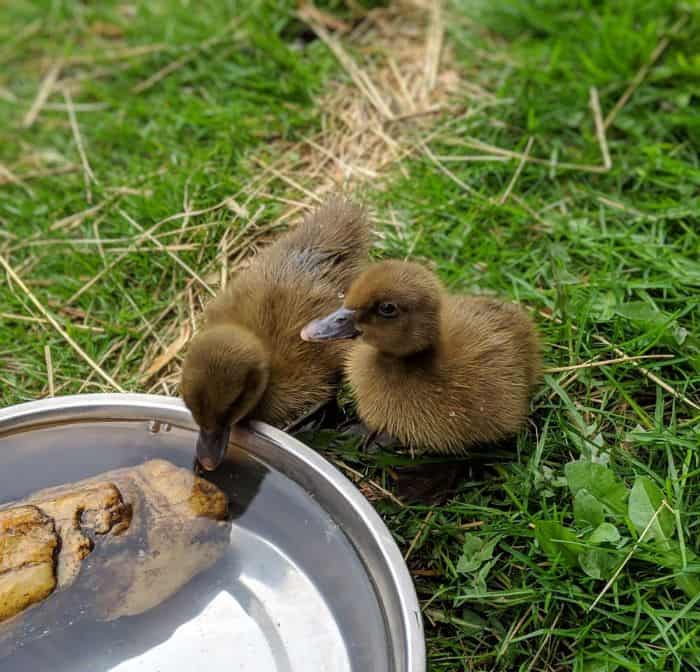
If you’re raising Khaki Campbell ducklings, you’ll have to start them out with the right food. Waterfowl starter crumbles or flock raiser crumbles are the ideal feed for new ducklings if you can find it. Unfortunately, not every feed store carries this feed, which means you may need to get creative.
You can feed ducklings chick starter, but never feed them medicated chick starter. The main difference between waterfowl starter and chick starter is the levels of Niacin or B3 in the feed. Growing ducklings require higher levels of Niacin than chicks, otherwise, they will grow up with severe vitamin deficiencies.
When feeding chick starter to ducklings, mix in brewer’s yeast at a ratio of one tablespoon to a cup of feed. Make sure to always keep brewer’s yeast on hand when raising ducklings just in case a duckling becomes deficient.
Grown ducks do best on flock raiser pellets, which will meet all their nutritional needs for health and egg production. If you are raising your ducks with chickens, ducks perform just fine on laying feed meant for chickens.
Always feed your ducks near their water because ducks can easily choke if they are unable to eat and drink at the same time.
2. Housing and Fencing
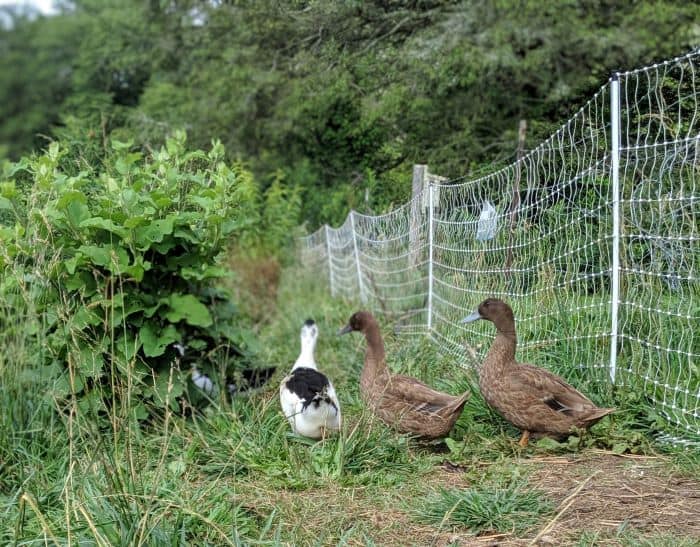
Ideally, you’ll want to build your duck coop near the ground due to the fact that ducks have a hard time navigating ramps for raised coops. Once your coop is built, you won’t have to worry about roosts or nesting boxes because ducks like laying eggs and sleeping on the ground.
Inside the coop, 5-6 square feet per duck is ideal, with 12-15 square feet per duck in the run. Your ducks will always enjoy extra space, but they should get along just fine with this space if you don’t have extra room.
3. Health and Care
Khaki Campbells are very healthy ducks as long as they are given the proper living conditions that all ducks need to thrive. Clean the coop regularly because the extra mess that ducks cause can be detrimental to their health if it isn’t managed.
Make sure to provide a kiddie pool for your ducks to splash around in if you don’t have a pond or spring because ducks always need water they can submerge themselves in.
Managing a flock well and meeting their daily needs will go a long way in making sure your Khaki Campbells are healthy and vigorous. Always keep a close eye on your flock to make sure you spot anything amiss before it gets out of hand and spreads to the rest of the flock.
4. Breeding
If you haven’t bred ducks before, Khaki Campbells are an excellent duck to start out with. Khaki Campbells have reports of outstanding fertility, which makes them good candidates for a duck to breed.
Additionally, the excellent mothering capabilities of Khaki Campbell hens means that sometimes you won’t have to hatch and raise your own ducklings, which can definitely simplify things for the busy farmer.
Breed Alternatives
1. Indian Runners
Indian Runner ducks make an excellent alternative to Khaki Campbells because Khakis descended from Runners in the first place. Just like Khaki Campbells, Indian Runner ducks are excellent layers, which makes them another great egg production pick.
Did You Know?
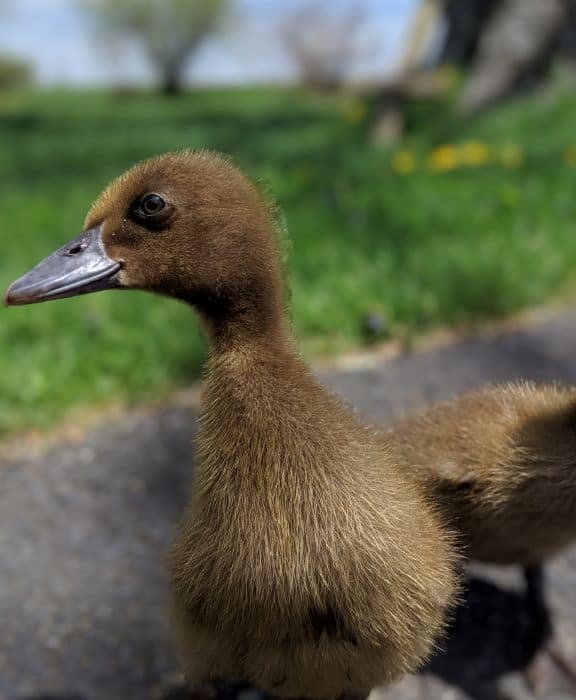
A Khaki Campbell duck was the bird that set the world record of most eggs laid in a single year! This Khaki Campbell over achiever laid 365 eggs in 365 days.
Personally, I can’t recommend Khaki Campbells enough for anyone that is considering diving into duck keeping. For seasoned duck keepers, Khaki Campbells still make a great choice because of all their convenient attributes for the practical farm.
